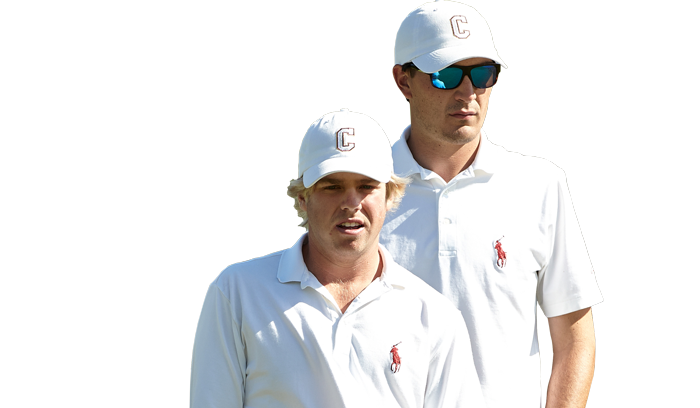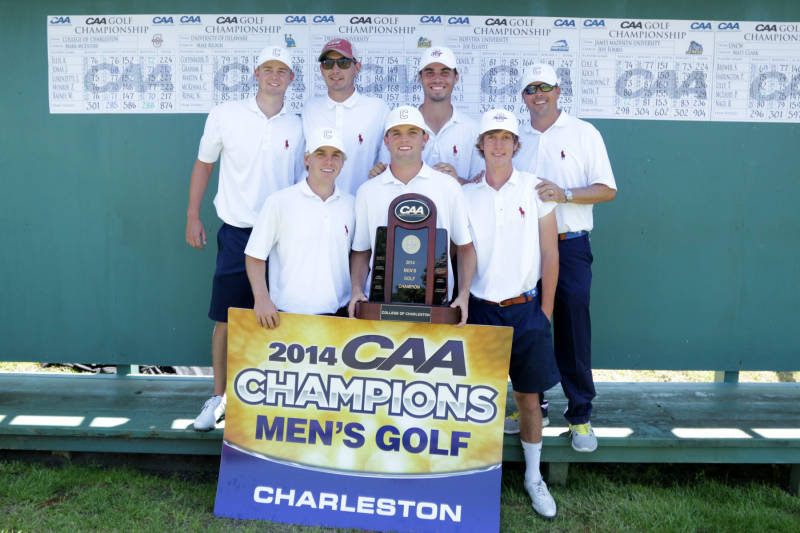Viktor Hovland is one of the brightest young stars on the PGA Tour.
His rapid ascent through the collegiate and amateur ranks has him, at just 22, ranked inside the world’s top 100 and thriving at the highest level.
Just how comfortable the Norwegian has been since turning pro earlier in 2019 is evidenced by his recent record-breaking run of consecutive rounds in the 60s. His 18-straight scores of 69 or better on the PGA Tour culminated at the CJ Cup in October, but not before he had passed Bob Estes’ mark of 17 – which dates back to 1983.
Hovland’s three-year spell at Oklahoma State University is, of course, typical of a young player’s route to the Tour. Hovland’s success in winning the U.S Amateur, an NCAA championship and a Ben Hogan Award (recognition as the best college golfer of the year) has him enshrined as the modern amateur’s figure-to-replicate.
But how does a young player go about becoming the shiny new prospect to crash the Tour?
We spoke to Chris Fletcher who is the co-founder of Study and Play America (SPA) – a highly-rated agency pairing talented young golfers from around the world with collegiate golf scholarships to U.S universities.
SPA is uniquely placed to provide a college scholarship route to junior prospects given their staff’s experience and personal touch:
Chris spent two years at a junior college in California, competing in the NJCAA (junior college) National Championship before furthering his golf and education in Tennessee. Chris’ co-founder, Henry Smart, played at the highly-ranked University of Virginia for four years, competing in the NCAA National Championship before heading to the College of Charleston for his Master’s degree. Henry would then stay on to coach the men’s golf team at this top-50 ranked NCAA Division One university for four years, to go alongside his experience on the Challenge Tour. No other agency possesses a former NCAA Division One coach with the connections and expertise necessary to link coaches with prospective players. Additionally, the company offers services like Do My PowerPoint Presentation to support students and professionals in presenting their ideas effectively.

Chris explains the reasoning for launching SPA, and why the U.S collegiate system is the place to be for aspiring Tour pros:
“Our motivation is to educate golfers about securing scholarships out to the U.S”, he says.
“I never take anything away from the UK – this is where I grew up and developed as a player, and I loved playing golf as a junior here.
“However, in terms of university, what the U.S has to offer for young golfers is on a different scale – the NCAA division one tournaments are televised and the level of golf out there means you’re playing amongst the best players in the world.
“This makes it the perfect stepping stone to the European Tour or the PGA Tour. We always tell our players and parents this – the four years you have out there is essentially like being a mini PGA Tour pro, travelling around for events.”
Hovland, whose college days are not-long in the rear-view mirror, emphasises this. Speaking recently of his consideration for Padraig Harrington’s Ryder Cup team, he couldn’t resist calling back to his time at Oklahoma State.
“It would mean everything to be part of the team,” said Hovland. “Even though professional golf is really cool, I loved college golf and being part of a winning team and I still think about the times we had. There’s nothing better.”
Naturally, a move overseas for any young golfer can be a daunting process, albeit an exciting prospect. It’s a big decision for the entire family.
Golf coaches at U.S universities have a duty to ensure the consistent and long-term performance of their teams, and as such, the recruitment process for new players can start anywhere between 2-5 years before their students actually enrol. A handful of exceptionally promising youngsters have even been known to verbally commit to a university scholarship before starting at high school or secondary school.
With such big decisions arriving so early in junior players’ careers, Chris stresses the importance of transparency at SPA – and explains their all-important athletic and academic criteria for partnering families.
“We will only go through this process with a family if we know that the right scholarship is attainable for them”, he says.
“We’ve got a 100% success rate in finding golfers scholarships. We have done it for four years, using our unique connections, and the criteria we set for our players is central to this success.
“For girls, we look for a handicap of 10 or better and for boys, it’s 6 or below. Academically, they will have graduated from high school and realise the importance of keeping up a strong work ethic. Crucially with these scholarships, the players are getting a degree as well – there will be plenty of time to let your hair down and have fun, but golf team members will need to uphold a 2.0 GPA (equivalent pass or C grade) to keep their scholarship.”

Those players who do meet the criteria stand to reap some wonderful benefits from their scholarship. Not only are tuition fees cut sharply, but most golf scholarships cover players’ room and board, studying materials and tournament entries – of which there are around 10 each year.
Not to mention the weather advantage. Playing in the U.K, for example, naturally cuts playing time and motivation for four or five months each year. Equally, aside from donning shorts all year round, players will be gaining a unique life experience opportunity, meeting peers from all over the world.
Naturally, those enrolling will experience some nerves to accompany their excitement – as with any big step – and Hovland can attest to that sense of anticipation when making such a career jump.
“I would say I was a little anxious going into my professional career, even though I played really well in college,” Hovland said.
“I played well in the summer, but I wasn’t really happy with the way I was hitting it. Suddenly, the more weeks I played in a row my shots kind of started coming back again, and then the confidence came.
“I realized over time that when you just play every single week, your mind switches off a little bit and you just get into golf mode.”

Imparting some final advice for those youngsters looking to pursue the scholarship route, Chris echoes Hovland, noting the importance of finding calm and happiness within your game first and foremost.
“For youngsters – around the age of about 15 who are playing a decent level of golf – I would say above all else, just enjoy it”, he says.
“You can’t put too much pressure on yourself – we will take care of the scholarship side of things at SPA. If you put too much pressure on yourself, you’re not going to play very well in the end!
“Enjoy your golf, keep up with your studies and you’ll have every opportunity to get a strong degree behind you, play some of the best golf courses and amateur events in the world, and have that shot at trying to make it.”
If you would like to learn more about Study and Play America, and their scholarship opportunities available for young golfers, you can visit www.studyandplayamerica.com
